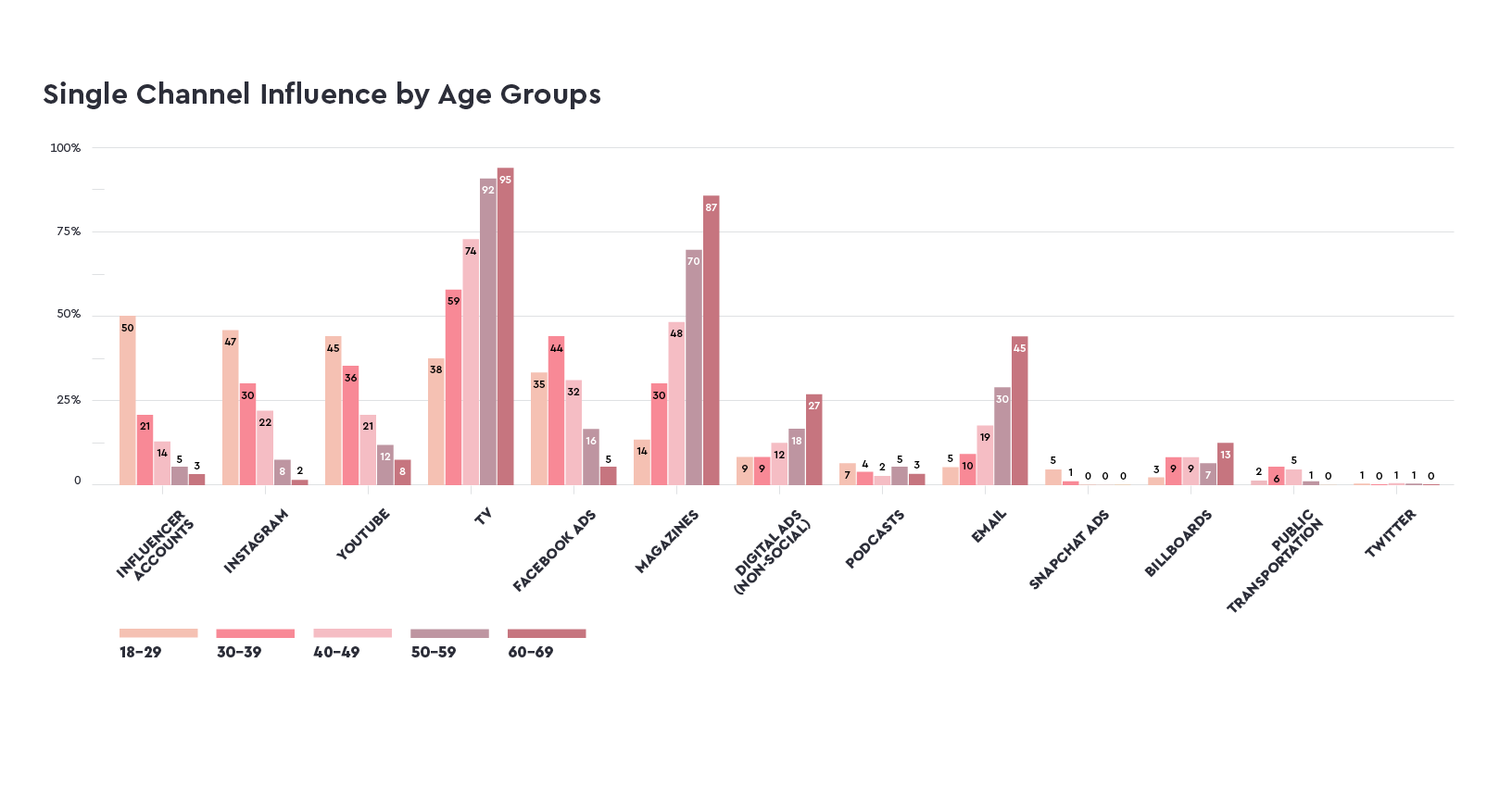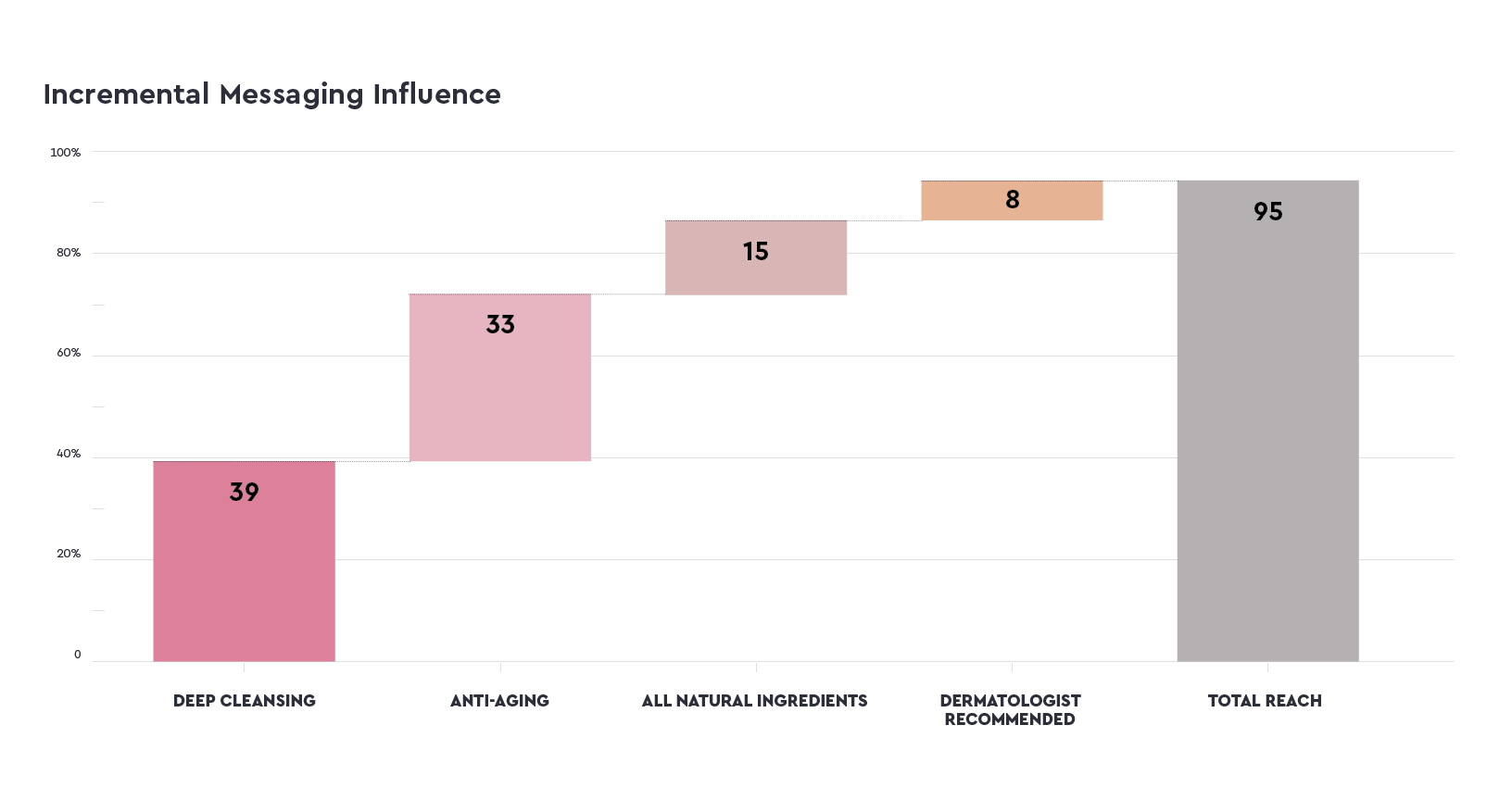To find what makes skincare brands stand out in such a saturated media landscape, we used two TURF analyses to measure the influence of advertising claims and channels among 400 US females (18-69).
Our study found that the channel of advertising has more of a differentiating effect on consumers than the actual messaging claims conveyed. TV is most influential as a standalone source for skincare advertising, with 68% of consumers influenced through this medium. This channel is especially influential among older consumers, with 95% of 60-69-year-olds influenced through TV ads compared to just 38% of 18-29-year-olds (as shown in the chart below).

Contrarily, younger generations (18-29) are primarily influenced through means of social media, such as Influencer accounts (50%), Instagram ads (47%), and YouTube ads (45%). These could be sponsored ads, sponsored posts, or accounts dedicated to sharing/reviewing skincare content. Influencer accounts in particular hold a strong potential in the advertising mix, considering 76% of 18-29-year-olds mention they follow these accounts on social media (Instagram and YouTube being the most popular). The effect of social media is exemplified in our incremental channel influence, where the use of Instagram ads in addition to TV ads allows a brand to influence another 18% of skincare consumers. Even further, adding YouTube to the mix accounts for another 7%.
When it comes to the actual content of messaging conveyed through these advertisements, there is no single claim that stands out among the rest. However, there is still an opportunity for brands to extend their influence by incorporating a variety of messaging tactics that resonate with different audiences. For example, ‘deep cleansing’ claims are influential to 39% of consumers. As shown below, if a brand were to add something to their 'deep cleansing' messaging around ‘anti-aging’, the brand would now influence another 33% of consumers (that’s nearly three-in-four consumers at 72%).

Like advertising channels, age plays a factor in messaging as well. Younger consumers, under the age of 40, are highly influenced by messaging related to ‘deep cleansing’ (52% of 18-29-year-olds and 56% of 30-39-year-olds). As for those 40+, ‘anti-aging’ is far more influential (49% of 40-49-year-olds, 53% of 50-59-year-olds, and 68% of 60-69-year-olds are influenced by this messaging claim).
Knowing that both the channel of advertising and messaging content conveyed influence consumers in different ways, brands should strategically use their advertising budget on channels that make the most sense for their target audience and use a variety of messaging tactics to influence the greatest number of consumers in a very diverse market.
The full insights dashboard, including a closer look into skincare personas, brand preference, shopping behaviors, and advertising influence can be found below.


